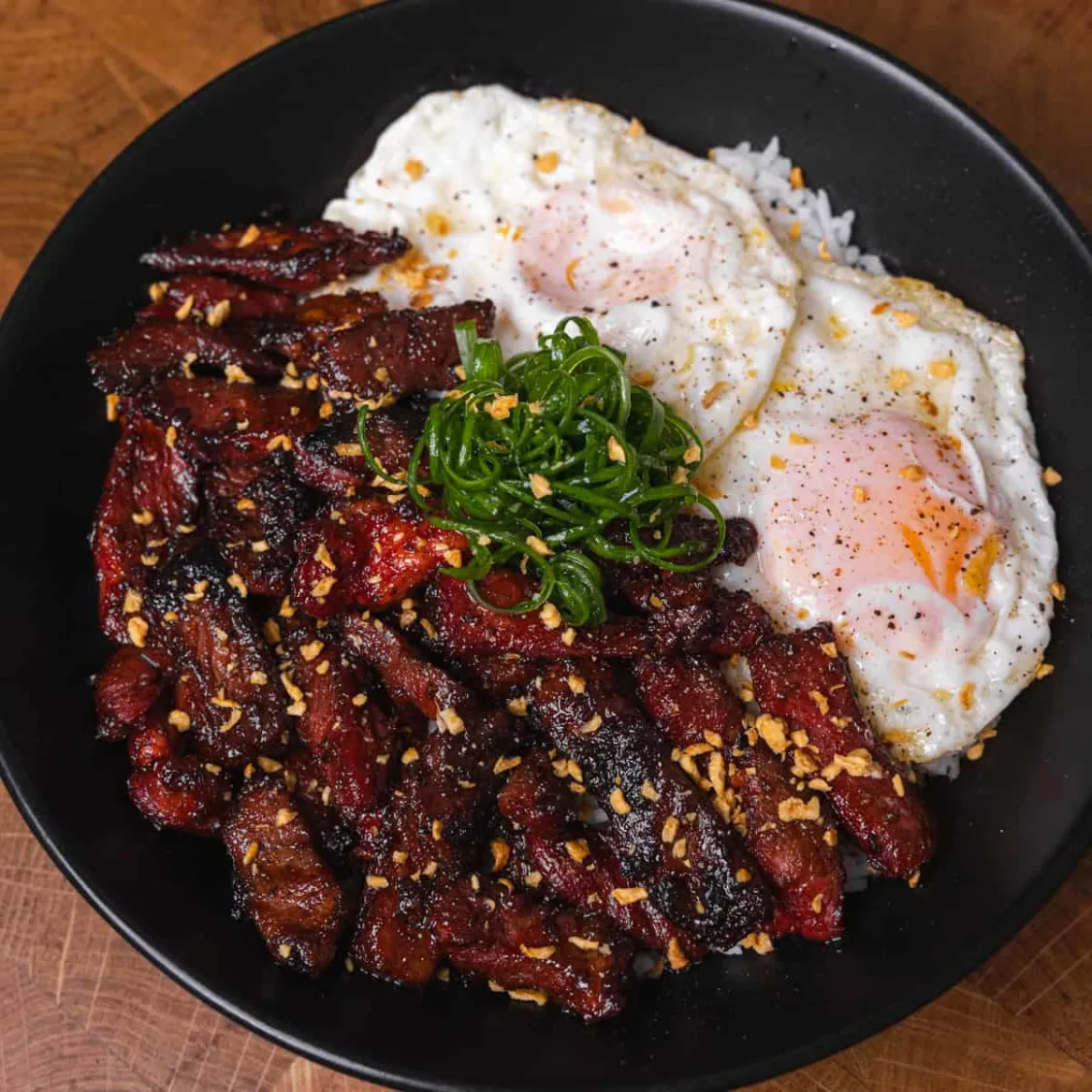
Tocino
Sweet cured pork belly that is fried until caramelized.
Ingredients
- •Pork belly
- •Sugar
- •Salt
- •Garlic powder
- •Anise wine
- •Red food coloring
Instructions
Cure
Mix ingredients and cure pork for 12-24 hours.
Cook
Fry until caramelized and crispy.
Tocino is a beloved Filipino breakfast meat that features sweet cured pork belly, fried until beautifully caramelized. The name comes from the Spanish word for bacon, though the Filipino version is distinctively sweeter and often takes on a reddish hue from food coloring or annatto powder. The meat becomes tender on the inside while developing a crispy, caramelized exterior during cooking.
This dish emerged during the Spanish colonial period but evolved to suit Filipino tastes, particularly the local preference for combining sweet and savory flavors. The addition of anise wine and the signature red coloring are uniquely Filipino adaptations that have become traditional elements of the dish.
Making tocino involves marinating sliced pork belly in a mixture of sugar, salt, garlic, and anise wine for at least 12 hours, though some recipes call for up to three days of curing. The long marination allows the meat to fully absorb the flavors and develop its characteristic taste. Traditional cooking methods involve frying the meat in its own rendered fat until it caramelizes, though some modern preparations use grilling or baking for a healthier approach.
While pork belly is the most common cut used for tocino, there are regional variations that use chicken or beef. Some versions add pineapple juice to the marinade for extra sweetness and tenderizing properties, while others incorporate different spices like black pepper or bay leaves. Modern health-conscious adaptations might use lean pork cuts and natural sweeteners instead of refined sugar.
In Filipino dining, tocino is a key component of "tosilog" - a popular breakfast combination that includes tocino, sinangag (garlic fried rice), and itlog (fried egg). It's typically served with a vinegar dipping sauce to cut through the sweetness and richness of the meat. Some people also enjoy it with diced tomatoes or pickled papaya (atchara) on the side.
While delicious, tocino should be enjoyed in moderation due to its high sugar and fat content. A typical serving contains approximately 250-300 calories, with significant amounts of saturated fat. The curing process also makes it high in sodium, so those watching their salt intake should be mindful. For a healthier experience, consider using leaner cuts of pork, reducing the sugar in the marinade, or opting for grilling instead of frying. Despite these considerations, tocino remains a cherished part of Filipino cuisine that brings comfort and satisfaction to breakfast tables across the country.
